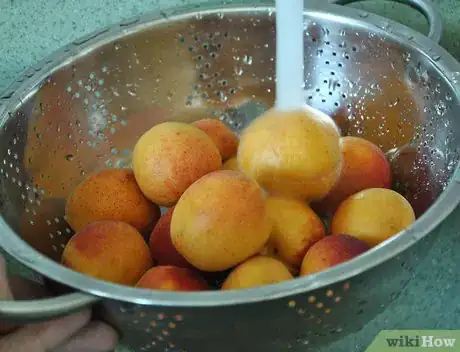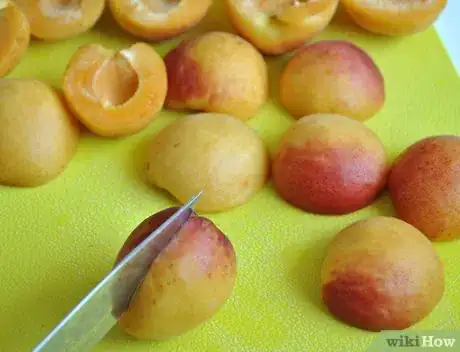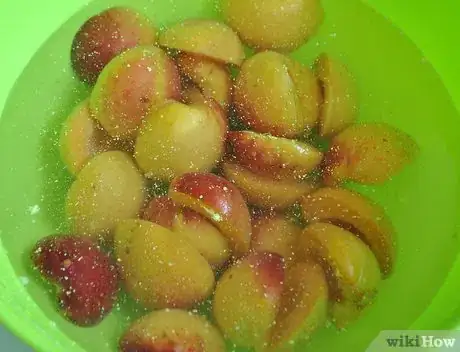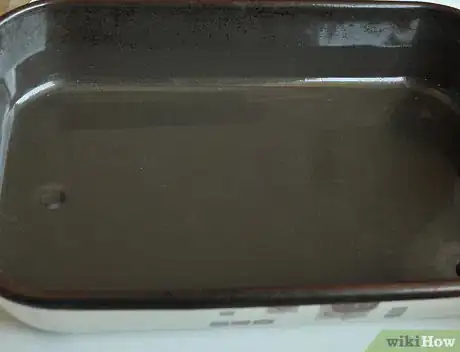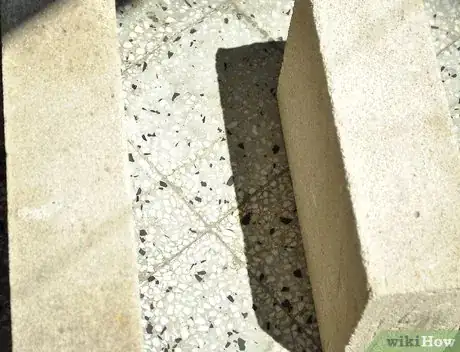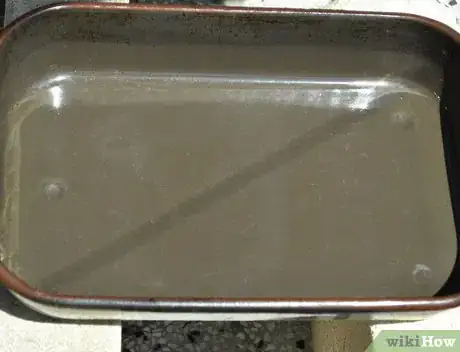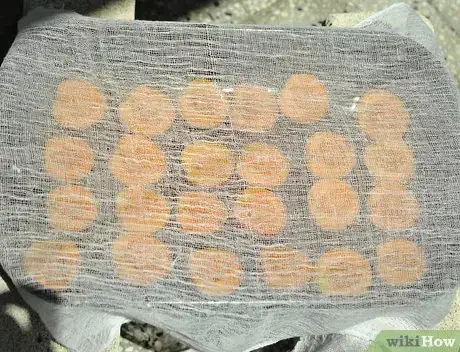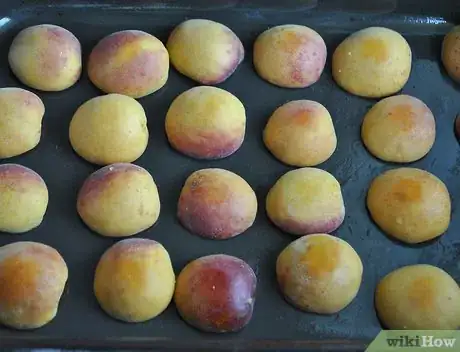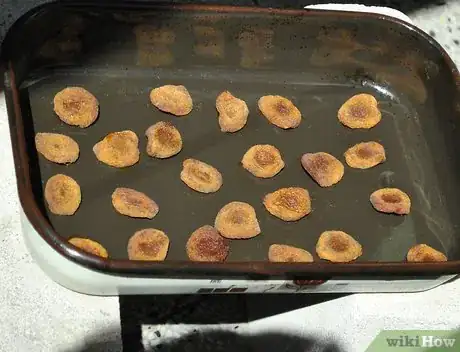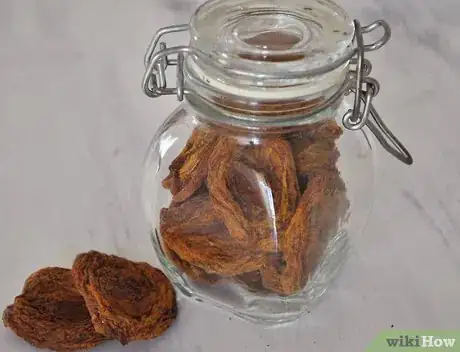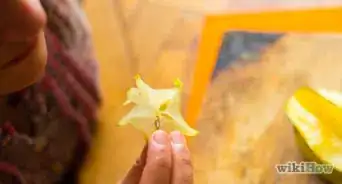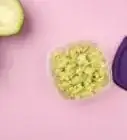wikiHow is a “wiki,” similar to Wikipedia, which means that many of our articles are co-written by multiple authors. To create this article, volunteer authors worked to edit and improve it over time.
There are 11 references cited in this article, which can be found at the bottom of the page.
This article has been viewed 55,685 times.
Learn more...
Humans have preserved food by drying since ancient times. There are many ways to dehydrate fruit, including using ovens and special dehydrators. The most basic method is air drying fruit, which includes sun drying. Solar drying sometimes refers to a slightly more complex method. To air dry fruit, you must cut thin pieces and pre-treat them with ascorbic acid and water. The fruit is then arranged on a drying rack to air dry over several days.
Steps
Preparing Fruit
-
1
-
2Slice the fruit thinly. Keep slices equally sized, so all the pieces will dry in the same amount of time.[3]
- Trim apples into rings or slices about 1/8 inch (0.3 cm) wide.
- Cut bananas into portions about 1/4 inch (0.6 cm) to 3/8 inch (1 cm) wide.
- Cut apricots in half or slice them.
- Cut pears, peaches, and nectarines into slices or quarters.
- Slice pineapple into pieces 1/2 inch (1.25 cm) wide.
Air Drying Fruit
-
1Check the local weather forecast for a hot, dry spell. You must have several consecutive days with at least 86 degrees Fahrenheit (30 Celsius). Humidity should be less than 60 percent.
-
2Get a screen or wood tray for a drying rack.
- Choose a screen made from plastic, stainless steel, or fiberglass coated with Teflon. These types can be safely used for fruit.
- Reject screens that can leave harmful deposits on food or alter food's nutritional value. Don't use screens constructed with aluminum, copper, or metal cloth covered with zinc or cadmium.
- Avoid wood trays made with cedar, green wood, oak, pine, or redwood. These will taint the flavor or discolor the fruit.
-
3Choose a drying site in full sun where you can keep an eye on the fruit.
- Place metal sheeting on the ground. Aluminum or tin will reflect sunshine and raise the drying temperature.
- Select a concrete surface if metal sheeting is unavailable. A concrete patio without a roof or a paved driveway will suffice. A concrete surface is drier than soil, which will allow the fruit to dry more quickly.
-
4Make 2 stacks of cinder blocks or bricks.
-
5Set the drying rack onto the blocks or bricks. This will allow air to circulate around the fruit.
-
6Spritz the rack with cooking spray to prevent sticking, then put the fruit on the drying rack. Arrange the fruit in 1 layer. Leave space in between the pieces so they don't touch.
-
7Put a layer of cheesecloth over the fruit. This will keep out bugs, birds, and debris.
-
8Turn the fruit pieces after they have dried for about 2 hours. You will turn the fruit every 2 hours while it's drying in the sun.
-
9Bring the drying fruit indoors at night. You don't want your fruit in the damp, cool air after the sun goes down.
-
10Air dry the fruit for 2 to 6 days, until only about 20 percent of the moisture remains.[5]
-
11Check the fruit for sufficient dryness.
- Slice some of the fruit pieces in half. You should not see any moisture nor be able to squeeze out any moisture.
- Bend the fruit. It should not adhere to itself or be sticky.
Community Q&A
-
QuestionCan I use an oven?
 Community AnswerNo, as that will roast the fruit.
Community AnswerNo, as that will roast the fruit.
Things You'll Need
- Fruit
- Kitchen utensils
- Ascorbic acid
- Water
- Drying rack
- Metal sheeting
- Cinder blocks or bricks
- Cooking spray
- Cheesecloth
- Freezer
- Freezer bags
- Storage containers
References
- ↑ https://www.fda.gov/consumers/consumer-updates/7-tips-cleaning-fruits-vegetables
- ↑ https://skillet.lifehacker.com/how-to-pit-a-peach-1796987521
- ↑ https://www.youtube.com/watch?v=UD04_12Ir1c
- ↑ https://digitalcommons.usu.edu/cgi/viewcontent.cgi?article=2781&context=extension_curall
- ↑ https://extension.umn.edu/preserving-and-preparing/methods-drying-food-home
- ↑ https://nchfp.uga.edu/publications/uga/uga_dry_fruit.pdf
- ↑ https://nchfp.uga.edu/how/dry/pack_store.html
- ↑ https://www.eatbydate.com/fruits/dried-fruit-shelf-life-expiration-date/
- https://www.motherearthnews.com/real-food/drying/dry-fruits-and-vegetables-at-home-zmaz77jazgoe
